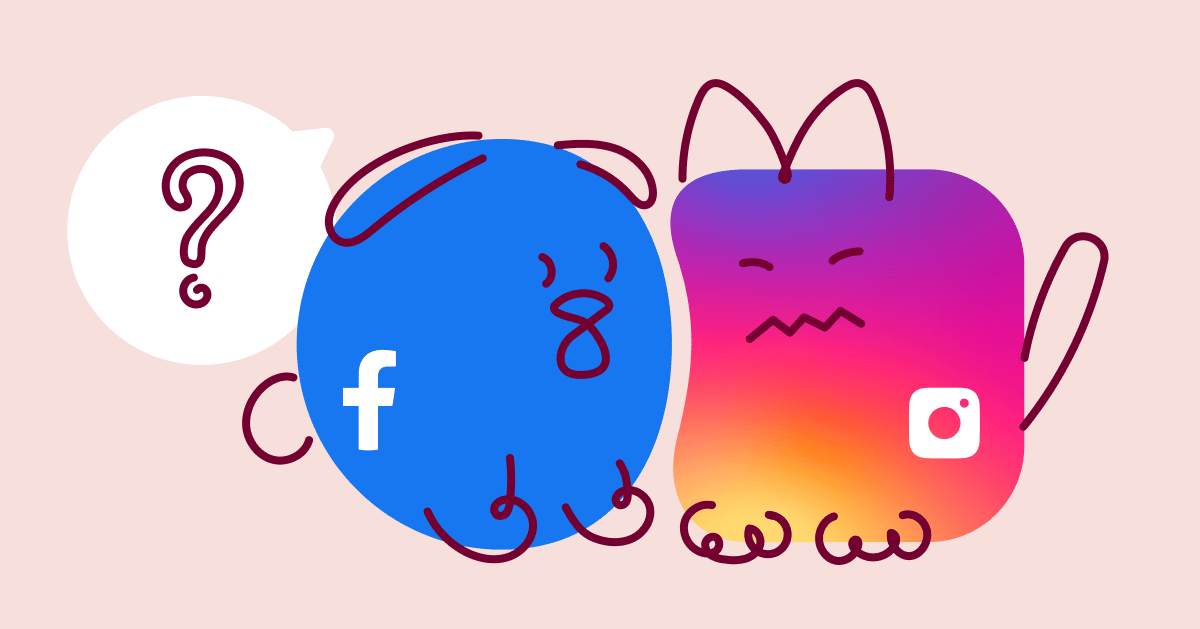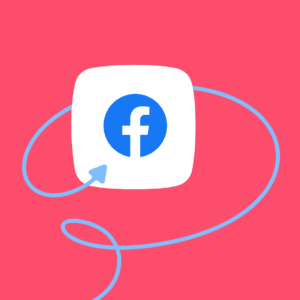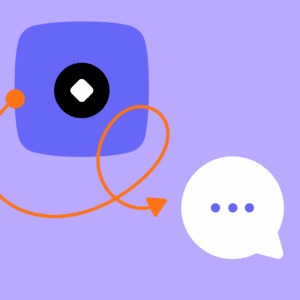Facebook vs. Instagram: Which Channel Is Best For You?

Social media is a numbers game, right? Like most marketers, you probably closely monitor how many followers you have, likes you get, impressions you make, and orders you receive. And from a numbers perspective, it’s easy to view Facebook as the top social media channel to focus on.
After all, Facebook is the biggest social network worldwide, with roughly 2.91 billion monthly active users. Instagram, on the other hand, has around one billion monthly active users. So why wouldn’t you just pour all your social media efforts into Facebook?
Well, the answer depends on other important factors, like who you’re targeting, the platform’s algorithm, and your campaign goals. This article will show the key differences between Facebook and Instagram so you can decide where to run your future social media marketing campaigns.
What’s the difference between Facebook and Instagram?
The key difference between Facebook and Instagram is that Instagram only enables posting photos and videos. Facebook allows you to post photos and videos as well other types of media, like articles, quizzes, website links, and long videos.
Instagram is a free online photo and short video social media platform, while Facebook is a free social media platform where users can share different post types with other users.
Facebook has web and mobile app versions, both of which are popular with users. Although Instagram is also accessible from a web browser, it’s mobile app version is more user-friendly and widely used.
It’s also worth noting that while Facebook has a much larger global base of users than Instagram, Instagram’s audience is younger.
Facebook versus Instagram by the numbers
Upon digging deeper into the data, you’ll find that both Instagram and Facebook have specific divergences that make them better-suited to particular marketing campaigns.
Audience demographics
Both social media platforms have different audience demographics. Instagram targets a younger demographic mostly comprised of people under 30.
As of Q4 2021, 31 percent of global active Instagram users were between the ages of 18 and 24. More than half of the global Instagram population is 34 or younger.
It’s popular among users seeking style inspiration, creative ideas, new trends, and learning about what influencers are up to. If your brand wants to reach a younger, visually-aware millennial audience, visibility on Instagram is essential.
Facebook has a broader base of different age groups. Though platform targets young people, adults, and the elderly, it appeals more to a slightly older age group. (Currently, around 32 percent of Facebook’s users are between 25-34 and 18 percent are 35-44.)
Its extensive audience demographics can be useful for brands with a more widespread appeal looking to target varied audience segments in multiple locations.
One of Facebook’s biggest benefits is that brands can easily target specific user demographics (like age) and then further segment this group by location, profession, and interests.
If you’re running an ad campaign on Faceook, you can easily customize it to reach people in your target age range or other segments (more on this later).
Engagement
Although many people believe Facebook’s popularity faded during Q3 2021, Facebook still reported approximately 1.93 billion daily active users (66% of monthly active users). And in the U.S alone, the daily time spent on social media is just over two hours.
In comparison, 63 percent of Instagram users in the United States accessed the photo-sharing app on a daily basis.
The majority of users on both social media platforms are active on a daily basis. But the key is to think about the intention behind users’ interactions with the platform.
Generally, Instagram emphasizes inspiration, discovery, and observation.
Instagram is often seen as a resource for learning about new brands, places, and trends. People use it to get new ideas and be visually inspired.
Facebook, on the other hand, prioritizes personal connections and interacting with content shared by friends and family. In fact, 88 percent of users say that they use Facebook to stay in contact with friends and family; only 17 percent say they use it to follow brands/companies.
For that reason, it’s not always best for building brand visibility since most people use it to interact with people they know.
Functionality
Facebook and Instagram cater to different use cases. Instagram is set up for sharing videos and images while Facebook enables more varied post types.
Facebook provides audiences with substantial information and caters to diverse demographics with different expectations. People log on to view videos, read posts, see Stories, read the news, play games, and learn about new events. Users can even find personal information about individuals, business history and contact information, and events businesses hold.
Instagram users expect clear and visual information when they log onto the platform. It’s easy to quickly scan an image and a couple of lines of accompanying text in the caption.
Thinking about each platform’s functionality will help you create a marketing campaign that plays to your chosen channel’s strengths.
Ad spend
According to recent studies, clicking on Facebook ads is the most popular activity its users engage in. In any given month, the average Facebook user clicks on 12 ads; in the U.S., this number rises to 18 ad clicks per month.
Users trust Facebook to show relevant ads. For that reason, it’s worth leveraging this trust to launch your own ad campaigns.
If you’re running ads on either Facebook or Instagram, you’ll want to pay attention to the cost of running the campaign and how it will impact your revenue. Facebook ads are generally better valued than Instagram ads (as measured by a per-click basis).
On average, the CPC value works out at $0.49 for Facebook ads and $1.09 for Instagram. Seeing as Instagram’s cost per click is more than double that of Facebook, you’ll need to make a clear budget and stick to it so you don’t risk running over it when you a run a campaign on the platform.
Facebook also has a much higher CTR for its ad campaigns. In fact, Facebook has the highest CTR overall—3.06% on average—compared to Instagram’s, which is 0.68%.
Having a low CPC and high CTR isn’t the be-all and end-all, however. You need those clicks to be high value too.
While each industry will have different CPCs and CTRs on each platform, Facebook is the clear winner. This is likely due to its highly customizable ad campaigns. While Instagram enables some customization, its filters aren’t as strong as Facebook’s.
Algorithm
Algorithms have the power to get your content in front of the right people. Ultimately it’s not about the quantity of views you get or impressions you make but their quality.
Social media feed algorithms decide which posts are seen by particular users and in what order they appear.
In the past, you might remember chronological news feeds that simply displayed all posts in order. While this timeline style was handy for making sure you didn’t miss any posts, it was messy if you were following hundreds of accounts. After all, how could you be sure you were going to see your favorite accounts’ most recent posts?
There was no way of getting them to the top. Algorithms are designed to give the end-user more of what they want –– relevant posts that they’ll engage with. This is great news as a marketer. Once you understand how both channels’ algorithms work, you can use them to your advantage and make better choices around your campaign planning.
While the exact science behind Facebook and Instagram algorithms remain a closely guarded secret, some key ingredients separate them from one another.
Instagram’s algorithm looks at:
- Relevancy: How relevant is the post’s genre to the user?
- Timeliness: The most recently published posts are ranked higher.
- Time spent looking at the post: The time spent viewing a post and not scrolling past it.
- Engagement: The number of likes and comments on the post.
- Relationships: Posts from accounts that the users interact with more frequently appear higher.
- Profile searches: Posts from accounts that users search for often rank higher.
- Shares: Posts from accounts the user has shared with others rank higher.
Notice how Facebook’s algorithm prioritizes other factors,.
Facebook’s algorithm values:
- Family and friends: Posts from personal accounts from people like friends and family appear higher. In other words, business accounts and brands are pushed down in ranking importance.
- Promotional posts are downgraded: Posts that push people into making purchases or taking part in competitions are demoted.
- Bait is deprioritized: Posts that aggressively push for likes, comments, shares, tags, or votes rank lower.
- Engagement: Posts that receive comments, likes, and shares in a short amount of time rank higher.
- Images and videos: Visual posts rank higher, while text-only posts are demoted.
With a better understanding of how both algorithms work, you can see which types of posts are more likely to perform best on each channel. While Facebook might seem like the obvious choice for brands that want to reach a massive global audience, its algorithms aren’t always the most friendly towards promotional content.
How to choose which channel is best for your brand
Whether you run a local business selling organic groceries or a drop-shipping brand selling dog collars, a strong social media presence is vital for building brand visibility and trust. In all likelihood, you should and probably already have an active business account on both Facebook and Instagram.
By having active profiles on both social media platforms, you can choose the best platform to run each of your campaigns on.
For example, if you want to target New York-based millennial dog owners for your latest dog treat product, you might find that Instagram is best for engaging with potential customers and sharing engaging organic posts.
But if you run a green grocer and want to run a hyper-targeted campaign aimed at a local market of working professionals in their forties living in downtown Seattle, Facebook is probably the better social media platform. It enables you to run a highly targeted campaign without burning through your ad budget quite so fast.
The key is to think about the goals of each of your marketing campaigns. Are you trying to build authenticity and engage with more of your target audience? Or are you trying to advertise a specific product or service to a smaller, highly defined audience in a specific location?
Answering these questions will help you choose between Facebook and Instagram when it’s time to launch your next social media marketing campaign.
Final thoughts: Instagram versus Facebook
Facebook and Instagram are powerful tools for building your brand’s online visibility. Instead of focusing on just one, it’s best to use both Facebook and Instagram in tandem and take advantage of their unique strengths.
Facebook is a great entrance to online stores or other media sources because you can post links anywhere. The platform’s paid ads are also cost-effective and well-suited for reaching diverse age groups and demographics.
But if you’re looking to directly interact with younger customers and create a stronger brand identity, Instagram is your best bet.
Both platforms have their pros and cons –– the important thing is to know how to tie them to your goals and use them to your advantage..









